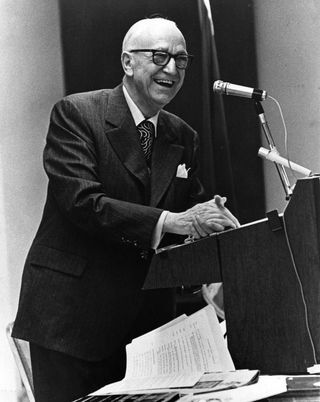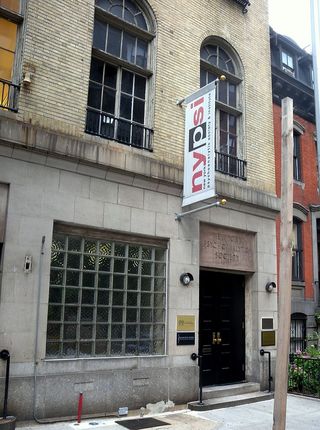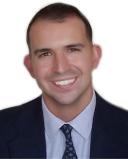Psychoanalysis
The Fall of Psychoanalysis in American Psychiatry
A brief review of the decline of psychoanalysis in psychiatric medicine.
Posted December 30, 2019 Reviewed by Ekua Hagan

The year is 1960. John F. Kennedy defeats Richard Nixon to become President of the United States. The new cars rolling off the production lines in Detroit are marked by their rocket-inspired tail fins and an assortment of stylish colors. And psychoanalysis is in its heyday in American psychiatry.
By 1960, virtually every major psychiatry position in the U.S. was occupied by a psychoanalyst. More than half of all psychiatrists were training to become analysts or were analytically-inclined in their orientation. All of the major psychiatry departments appointed psychoanalysts as chairmen. Case Western Reserve in Cleveland, the University of Pittsburgh, UC San Francisco, the Johns Hopkins University, Penn, Columbia, Stanford, Harvard, and Yale each saw psychoanalysts ascend to their department chairs.
Psychoanalysis had become a lucrative, high-prestige subdiscipline of psychiatry, attracting the best and brightest minds from American medical schools. The future looked bright, and the opportunities seemed endless.
The psychoanalysis of this era was a conservative and elite discipline. White males in skinny ties and horned-rimmed glasses seemed more interested in becoming respected members of the establishment than in challenging it. Insular, highly competitive, and prestigious, psychoanalysis became a "status symbol," both for the doctors who trained in it and the patients who could afford it.
But within 20 years, all of this had changed. Psychoanalysis was relegated to a second-class position in psychiatry, and the hope and excitement that marked psychiatry's relationship to psychoanalysis in the 1950s and 1960s had been replaced by doubt, criticism, and, in some cases, outright hostility.
Below, I offer several reasons for the decline of psychoanalysis in American psychiatry in the late 20th century.
The Broadening Scope of Analysis
The early years of psychoanalysis beginning with its founder, Freud, were focused on the development of analysis as a medical treatment for psychopathology. Originally trained as a neurologist, Freud was first and foremost a medical doctor, and he developed psychoanalysis in this spirit—as a precise and technical treatment, akin to surgery, for the neuroses, or milder mental illnesses. But by the mid-century, psychoanalysis was being applied to schizophrenia and the serious mental disorders, starting with Harry Stack Sullivan at Sheppard Pratt and followed by the likes of Silvano Arieti, Theodore Lidz, and Thomas Szasz.
In addition to its broadened application to disorders once considered outside of its purview, by the 1960s, psychoanalysis began to be applied to problems other than mental disorders, with analysts offering solutions a whole host of social ills, such as racism, poverty, and war.
By this time, psychoanalysis had deviated so far from its original intent that it started to look like a panacea for all of man's problems, not just a treatment for particular mental disorders. As a result, it became hard for some to take psychoanalysis seriously. Doubts within psychiatry began to emerge, and psychoanalysis' pathologization of homosexuality as a disorder amenable to analytic treatment only further isolated it from the societal mainstream.
Birth of Modern Psychopharmacology
Australian psychiatrist John Cade's discovery of lithium carbonate as an effective treatment for manic-depression in 1948 opened the door to a new kind of psychiatry: psychopharmacology. In the next few years, effective drug treatments for schizophrenia and major depression followed, with Henri Laborit's discovery of chlorpromazine and Roland Kuhn's discovery of imipramine, respectively. By the early 1960s, the benzodiazepines Librium and Valium had been synthesized for anxiety disorders.
With these discoveries, which rank among the most significant in the history of medicine, some psychiatrists became more interested in the pharmacological approach rather than the talking therapies for mental illness. What might take years to accomplish with psychoanalysis could be effectively treated within a matter of days or weeks with medication therapy.
Notably, the birth of psychopharmacology was not spearheaded by any discovery of the underlying biological basis of mental illness, nor was it associated with the ineffectiveness of the psychoanalytic approach. Psychopharmacology was new and exciting. Thomas Detre's 1971 book with Henry Jarecki, revealingly titled Modern Psychiatric Treatment, captured this excitement and contrasted the new science of psychopharmacology with the old-fashioned—and, to some, outdated—analytic approach.

Adoption of Psychoanalysis by Philosophy and the Arts
By the 1970s, psychoanalysis had been adopted by disciplines other than psychiatry and the mental health professions. Although formal training in analysis was still restricted to medical doctors—a uniquely American phenomenon—academics in the liberal arts, particularly the fields of philosophy, literature, and the arts, began applying the concepts and theory of psychoanalysis to their own disciplines.
Writings of psychoanalysts previously unheard of in America, such as the French analyst Jacques Lacan, began appearing on the psychoanalytic landscape. Lacan's writings, in particular, were dense and obscure. Psychoanalysis came to be associated with the intellectual class. No longer seen only as a medical treatment for psychiatric disease, it began to look silly to doctors who were more interested in treating patients than in esoteric philosophical debates.
Rise of Managed Care and Manualized Therapy
The 1980s were marked by the growth of managed care, i.e., insurance company involvement in health care decision-making, and the standardization of psychotherapy into easily-studied treatment protocols and manuals. This focus on cost-cutting and standardization led to the dissemination of briefer and more symptom-focused therapies, such as cognitive-behavioral therapy and related approaches.
Meanwhile, psychoanalysts had little interest in researching or standardizing their approach. They knew it worked, and the private nature of the psychoanalytic relationship did not render it amenable to traditional research methods. As a result, psychoanalysis fell victim to these broader social trends, and what little influence it continued to have on American psychiatry gave way to the short-term therapies and the development of the first SSRI drugs in the late 1980s.
Conclusion
What was once a powerful and well-respected subspecialty of psychiatry, psychoanalysis was largely abandoned by medicine by the 1980s and 1990s. Of course, some psychiatrist-psychoanalysts remained, but psychoanalysis, by and large, occupied only a small corner of psychiatry at this point. The 1990s was declared the "Decade of the Brain," and psychoanalysis didn't seem to fit within this new biological endeavor.
Fortunately, for psychoanalysis, it was adopted as a form of treatment by the nonmedical mental health professions, such as social work and psychology, following the opening of the psychoanalytic institutes to non-psychiatrists in 1988.
Today, psychoanalysis appears to be experiencing a resurgence. As the search for the biology of mental illness continues to hit dead-ends (see Anne Harrington's new book, Mind Fixers, for a good description) and research shows that psychoanalysis is, in fact, more effective than other therapies for some problems (see, for example, Shedler, 2010), psychoanalysis is once again gaining popularity and recognition as an effective form of psychiatric treatment.
References
Shedler, J. (2010). The efficacy of psychodynamic psychotherapy. American Psychologist, 65(2), 98-109.




